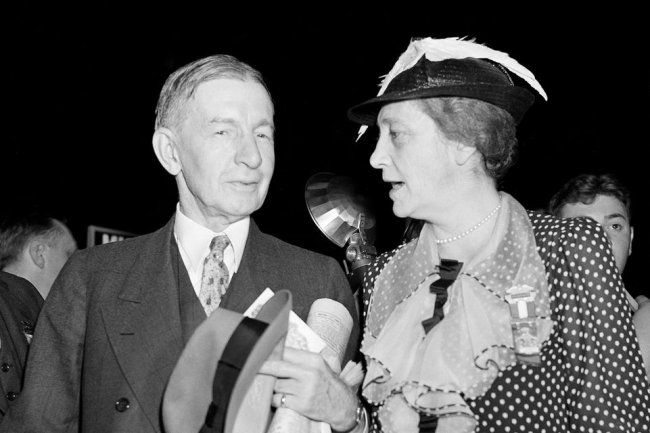Ukraine’s Lack of Weaponry and Training Risks Stalemate in Fight With Russia
U.S. and Kyiv knew of shortfalls but Kyiv still launched offensive A Ukrainian serviceman at an undisclosed location in the Donetsk region. Oleg Petrasyuk/Zuma Press Oleg Petrasyuk/Zuma Press By Daniel Michaels Updated July 23, 2023 12:04 am ET BRUSSELS—When Ukraine launched its big counteroffensive this spring, Western military officials knew Kyiv didn’t have all the training or weapons—from shells to warplanes—that it needed to dislodge Russian forces. But they hoped Ukrainian courage and resourcefulness would carry the day. They haven’t. Deep and deadly minefields, extensive fortifications and Russian air power have combined to largely block significant advances by Ukrainian troops. Instea


BRUSSELS—When Ukraine launched its big counteroffensive this spring, Western military officials knew Kyiv didn’t have all the training or weapons—from shells to warplanes—that it needed to dislodge Russian forces. But they hoped Ukrainian courage and resourcefulness would carry the day.
They haven’t. Deep and deadly minefields, extensive fortifications and Russian air power have combined to largely block significant advances by Ukrainian troops. Instead, the campaign risks descending into a stalemate with the potential to burn through lives and equipment without a major shift in momentum.
As the likelihood of any large-scale breakthrough by the Ukrainians this year dims, it raises the unsettling prospect for Washington and its allies of a longer war—one that would require a huge new infusion of sophisticated armaments and more training to give Kyiv a chance at victory.
The political calculus for the Biden administration is complicated. President Biden is up for re-election in the fall of 2024 and many in Washington believe concerns in the White House about the war’s impact on the campaign are prompting growing caution on the amount of support to offer Kyiv.

Near the city of Bakhmut, a Ukrainian serviceman fires toward Russian troops.
Photo: Sofiia Gatilova/Reuters

Members of the State of Emergency Service inspect an area for mines and unexploded shells near the Ukrainian village of Blahodatne.
Photo: Bernadett Szabo//Reuters
The American hesitation contrasts with shifting views in Europe, where more leaders over recent months have come to believe that Ukraine must prevail in the conflict—and Russia must lose—to ensure the continent’s security.
But European militaries lack sufficient resources to supply Ukraine with all it needs to eject Moscow’s armies from the roughly 20% of the country that they control. European leaders are also unlikely to significantly increase support to Kyiv if they sense U.S. reluctance, Western diplomats say.
The shift in trans-Atlantic political winds, evident in tensions between Ukrainian President Volodymyr Zelensky and U.S. officials at the recent North Atlantic Treaty Organization summit in Lithuania, has come as Ukraine’s long-expected offensive appears stalled. Kyiv’s inability to make headway against Russian defenses has persuaded many Western military observers that Ukrainian forces need more training in complex military maneuvers, more-potent air defenses and much more armor.
Moscow’s military, meanwhile, is grappling with low morale because of exhaustion, poor supplies and infighting among Russian leaders, Ukrainian and Western intelligence indicates. Russia appears unable to seize the initiative and attack Ukrainian positions, but its forces remain robust enough to man hundreds of miles of fortifications and large numbers of aircraft, which are keeping Kyiv’s troops at bay.
The situation is a sharp change from last year, when Ukraine’s scrappy and at-times uncoordinated fighters stunned Moscow and the world by halting and then repelling a far greater number of Russian forces from around Kyiv, and then Kharkiv and Kherson.
In those battles, Ukraine used a highly mobile, decentralized defense against Russia’s larger but lumbering ground forces. Moscow made limited use of its formidable air forces, failing to gain air superiority, which in turn allowed Ukrainian ground forces to batter Russian troops and their supplies.
Now, Ukraine is on the offensive against Russian positions where troops have had months to build extensive defenses including minefields, barriers and bunkers. Western military doctrine holds that to attack a dug-in adversary, an attacking force should be at least three times the enemy’s size and use a well-coordinated combination of air and land forces.
Kyiv’s troops lack the mass, training and resources to follow those prescriptions.
“Ukraine really needs to be able to scale up and synchronize military operations if it wants to be able to break through Russian defenses,” said Franz-Stefan Gady, an independent military analyst who recently toured Ukrainian front lines.

The Russian Air Force conducts flight testing of a reconnaissance and attack helicopter.
Photo: Sergey Pivovarov/Reuters

Russian helicopter crews destroyed this Ukrainian military hardware.
Photo: Russian Defense Ministry/Zuma Press
Gady said that rather than concentrating forces in assaults involving many units firing volleys of rockets and artillery—supporting simultaneous waves of advancing ground forces—Ukraine is attacking sequentially, with shelling followed by company-level infantry advances. The tactic “often telegraphs to the Russians that they’re attacking,” he said.
The small-scale approach, which is easier for commanders to orchestrate than pushing ground forces under covering artillery, creates its own problems, such as reduced mobility. Safely removing wounded soldiers from the front and bringing in fresh ammunition is more treacherous in company-level operations because the medical and logistics corps are less protected.
Conducting synchronized large-scale attacks is difficult for any armed force—even Western ones with more and better equipment than Ukraine has—because integrating vast numbers of land and air troops in the fast, violent ballet of a frontal assault is enormously difficult.
No Western military would also try to breach established defenses without controlling the skies.
“America would never attempt to defeat a prepared defense without air superiority, but they [Ukrainians] don’t have air superiority,” said John Nagl, a retired U.S. Army lieutenant colonel who is now an associate professor of warfighting studies at the U.S. Army War College. “It’s impossible to overstate how important air superiority is for fighting a ground fight at a reasonable cost in casualties.”
Zelensky acknowledged in an interview with The Wall Street Journal in May that Russia has air superiority at the front and that a lack of protection for Ukrainian troops means “a large number of soldiers will die” in the fight.
Ukraine had hoped to find gaps in Russia’s fortifications, flood troops through, and cause the kind of havoc that its forces achieved last year among enemy ranks. Instead, unexpectedly dense minefields slowed Kyiv’s initial attacking forces, leaving them exposed to strikes from Russian aircraft and rockets.
Russian drones and attack helicopters, particularly Kamov Ka-52 “Alligator” gunships, have proven particularly dangerous. Ka-52s, which are among Russia’s most modern aircraft, can remain far behind Russian lines and rely on targeting data from spotter drones scanning the front. Their laser-guided Vikhr missiles have a range of roughly 5 miles, which is more than twice the range of any portable antiaircraft missiles in Ukraine’s armory.
U.S. Defense Department analysts knew early this year that Ukraine’s front-line troops would struggle against Russian air attacks. A classified Pentagon assessment from February, allegedly leaked by Air National Guard Airman Jack Teixeira, tallied a tiny number of weapons in Ukrainian hands able to hit distant aircraft and cited the risk of “inability to prevent Russian air superiority.”
Kyiv lacks sufficient air-defense equipment—such as U.S.-made Patriot batteries or more mobile German Gepard systems—to deploy many near front lines. Patriots and other large, less-mobile systems are also vulnerable to Russian drone attacks.
Ukraine’s paucity of battlefield air-defenses and antiaircraft weaponry has allowed Russia to dominate skies along much of the front.

Ukrainian air defenses intercept a Russian drone in midair.
Photo: Evgeniy Maloletka/Associated Press

As the Russian war in Ukraine continues, NATO member Poland has been investing in new military equipment.
Photo: Omar Marques/Getty Images
“The Russians are now able to make better use of their aviation assets,” said Douglas Barrie, a senior fellow at the International Institute for Strategic Studies, a think tank in London. “Russia doesn’t have air-superiority over the whole of Ukraine, but from the defender’s perspective, they’re in a much better position.”
Countering Russian aircraft is a primary reason Zelensky and his team have for months lobbied Washington and its European allies to supply U.S.-made F-16 jet fighters. Ukraine has only a small air force of Soviet-made planes and helicopters.
F-16s, which are modern but not the latest U.S. jet fighters, could pose enough of a threat to Russian aircraft that they might be less dangerous to Ukrainian ground forces and civilian infrastructure, according to advocates for providing the planes.
Ukrainian pilots and mechanics are preparing to train to fly and maintain the complex jets, through a coalition of at least 10 European countries. But Biden hasn’t yet given the necessary permission for F-16s to be delivered to Ukraine, and establishing supply chains to support and repair the planes would take months. The soonest F-16s could appear on the battlefield is probably early next year, say analysts.
If Ukraine receives the planes, their impact on fighting would depend on many factors, including the number supplied, the sophistication of their onboard equipment and the weapons systems provided to arm them. Incorporating advanced jet fighters into battle plans is also extremely complicated, requiring another level of synchronization in Ukrainian operations.
“There’s no silver bullet in war,” said U.S. Chairman of the Joint Chiefs of Staff Mark Milley in April, when asked about F-16s for Ukraine. “The outcomes of battles and wars are the function of many, many variables.”
— Isabel Coles contributed to this article.
Write to Daniel Michaels at [email protected]

A Ukrainian serviceman looks up from a trench at a front-line position near the Ukrainian town of Siversk.
Photo: Anatolii Stepanov/Agence France-Presse/Getty Images
What's Your Reaction?













